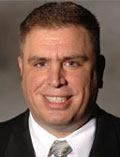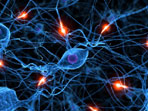|
PT Classroom - Complex Regional Pain Syndrome: Successful Treatments for a Complex Condition ׀ by Kostandinos Tsoulfas, MD |

Dr. Kostandinos Tsoulfas completed his undergraduate training at Wisconsin Lutheran College. From there he received his medical degree from Memorial University in Canada. Dr. Tsoulfas returned to Wisconsin were he successfully completed a residency in Family Practice through the University of Wisconsin at St. Lukes Hospital. Dr. Tsoulfas is board certified in Family Practice and Pain Medicine. During his residency training, Dr. Tsoulfas focused on pain management in a primary care setting. Dr. Tsoulfas is currently practicing at Advanced Pain Management and is a member of the implant team there which specializes in the implantation of intrathecal narcotic and baclofen pumps. |
|
Complex Regional Pain Syndrome: Successful Treatments for a Complex Condition |
|
|
|
|
|
|

 Complex
Regional Pain Syndrome (CRPS) or Reflex Sympathetic Dystrophy (RSD),
is one of the more complicated painful disorders to both explain and
treat. An otherwise healthy patient can come to the office with
complaints of aching or burning in the limbs or feelings of hot or
cold. Visible symptoms may include skin on the arm or leg changing
texture and color, swelling dramatically or becoming thin and shiny.
In addition, patients may experience muscle atrophy, muscle
tightening or tissue wasting.
Complex
Regional Pain Syndrome (CRPS) or Reflex Sympathetic Dystrophy (RSD),
is one of the more complicated painful disorders to both explain and
treat. An otherwise healthy patient can come to the office with
complaints of aching or burning in the limbs or feelings of hot or
cold. Visible symptoms may include skin on the arm or leg changing
texture and color, swelling dramatically or becoming thin and shiny.
In addition, patients may experience muscle atrophy, muscle
tightening or tissue wasting.



